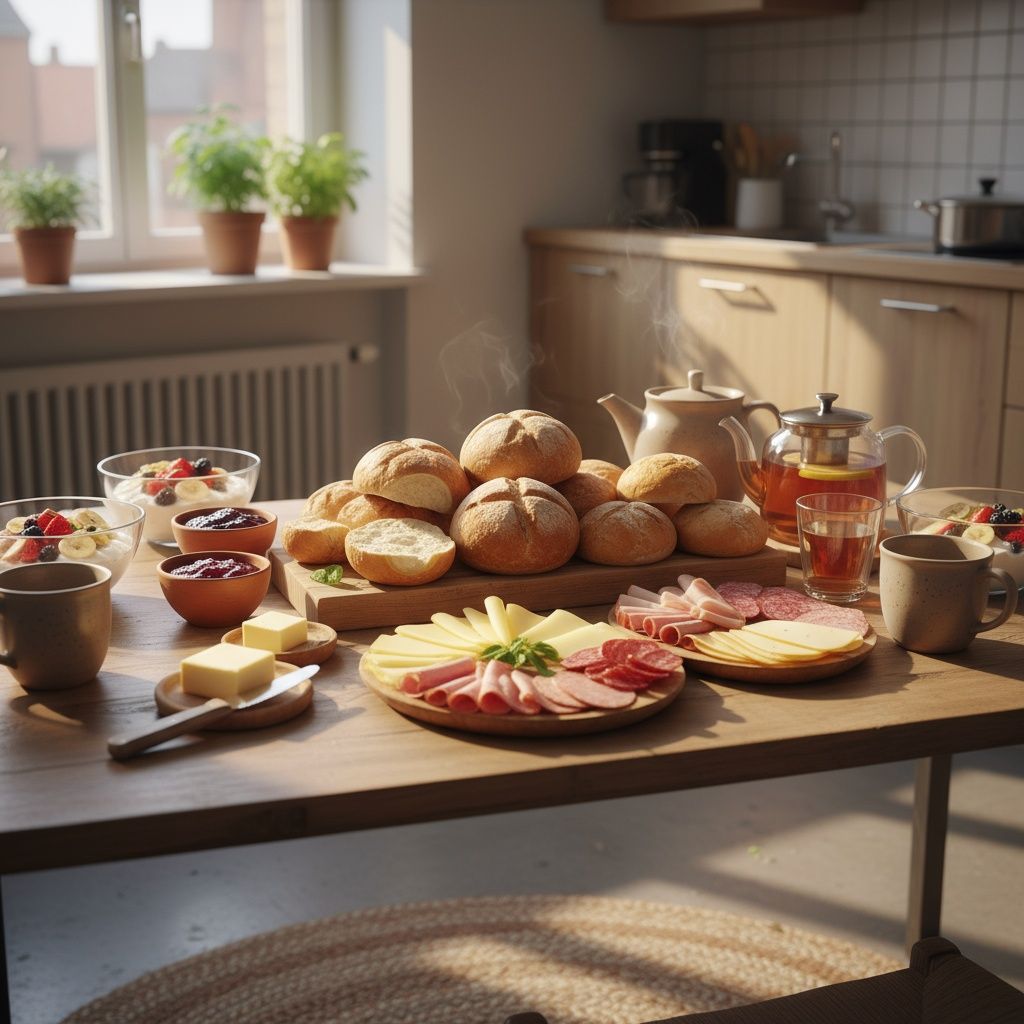Mahlzeiten und Tageszeiten: Wann isst man was?
 Dannis
Dannis
Morgens: Frühstück. Viele essen Brot/Brötchen mit Käse, Wurst oder Marmelade. Dazu Kaffee oder Tee.
Mittags: oft Kantine oder etwas Leichtes. Traditionell war das Mittagessen warm. Heute manchmal nur Salat oder ein belegtes Brot.

Abends: Abendessen/Abendbrot. Klassisch kalt: Brot, Käse, Wurst, etwas Salat. Viele essen abends auch warm, wenn mittags nichts Warmes gab.
Am Wochenende: mehr Zeit. Man frühstückt gemütlich, manchmal groß – mit Ei, Saft, Obst.
Mini-Vokabeln: morgens (in the morning), mittags (at noon), abends (in the evening), am Wochenende (on the weekend).
Mahlzeiten: Frühstück, Mittagessen, Abendessen (auch: Abendbrot, wenn es kalt ist).
Kultur: Im Büro sagt man mittags oft „Mahlzeit!“ – ein lockerer Gruß zur Pause. Antwort: „Mahlzeit!“ oder „Danke, gleichfalls.“